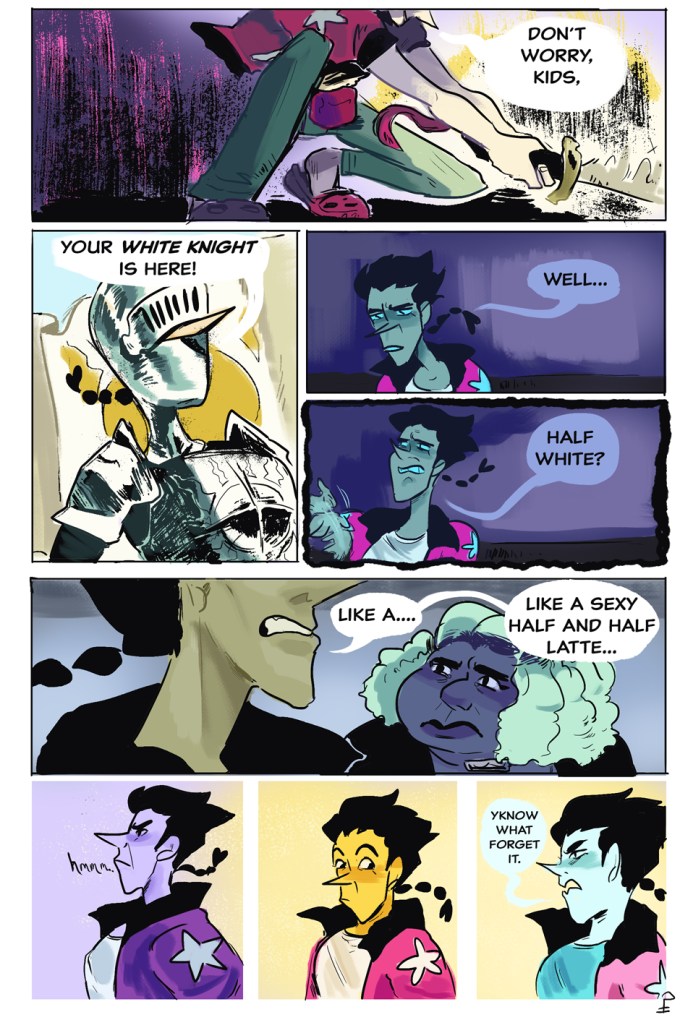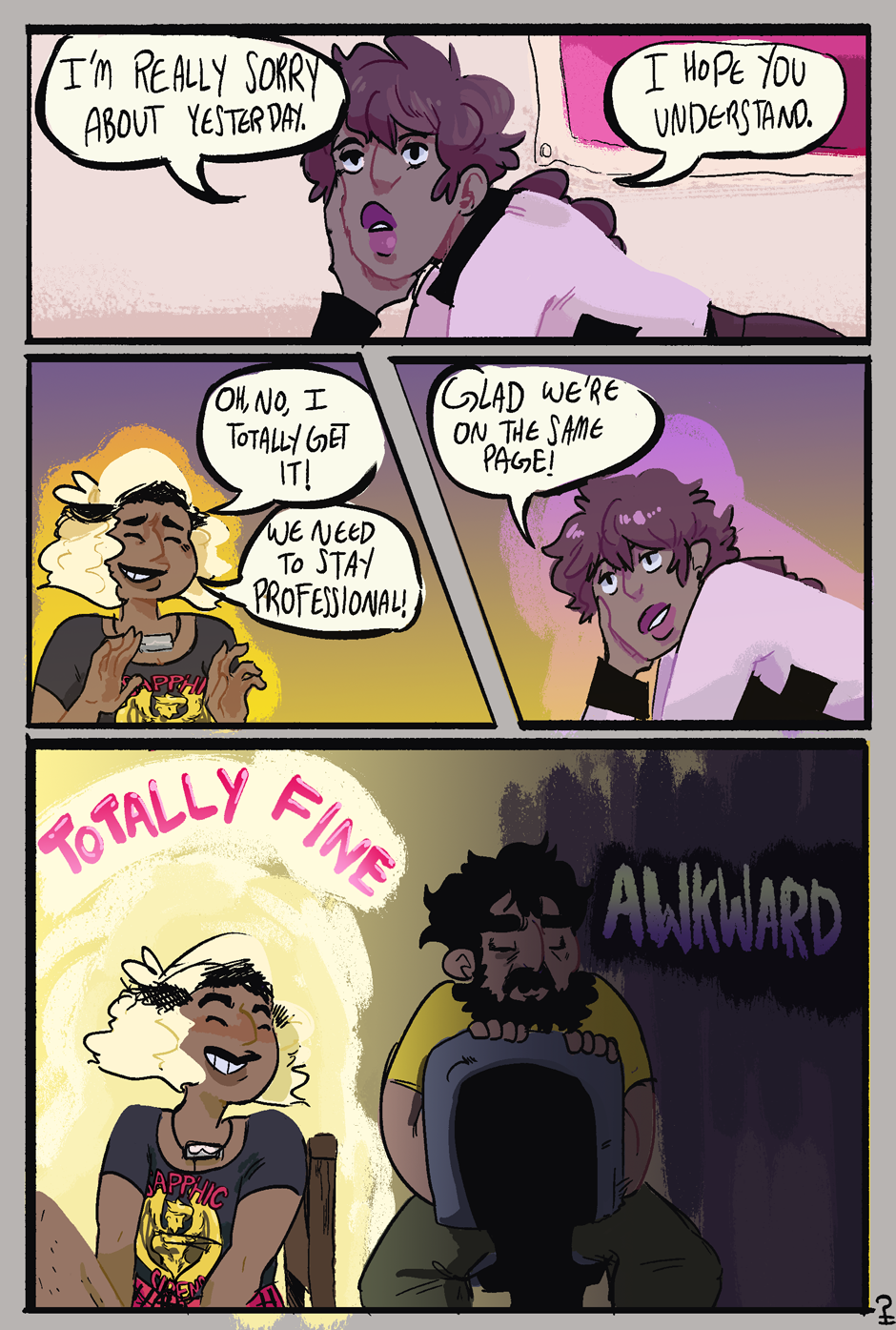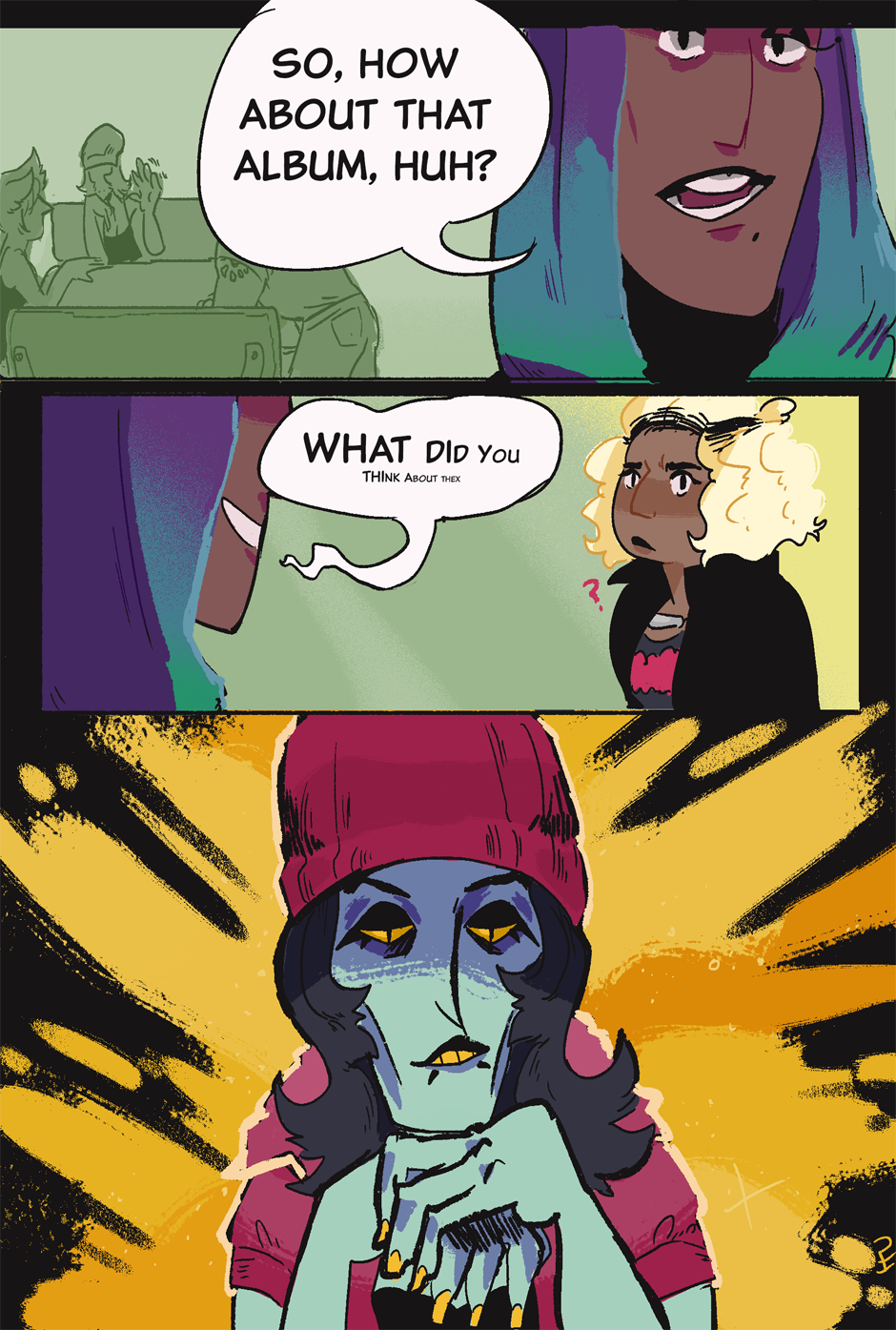by Rachel Smythe
ongoing web comic at Webtoon
reviewed and updated at season one finale
Lore Olympus is a wonderful and addicting modern retelling of the Persephone myth that blends fantasy romance with gorgeous visual storytelling. Don’t be put off by its home, Webtoon, or that it’s a webcomic: it’s an excellent story, has a huge fan following, and I’m calling it now – Rachel Smythe will be a comic book star sooner rather than later.
In Lore Olympus, Persephone is a charming but naive grad student, while Hades is lord (more like CEO) of the underworld, whose lives begin to intersect when Persephone starts university at Olympus. (If you’re interested in Hades’ evolution in pop culture, look no further than Lindsay Ellis’ fantastic video essay.) The gods are immortal beings with powers who also live in a modern world – Persephone is the goddess of spring, sprouting branches and flowers at will, but she also takes selfies and posts them to her “Fatesbook” account. The mortal realm is in the classical Greece era; while the gods certainly have powers, it also leans into the idea (beloved in sci-fi/fantasy) that magic is largely more advanced technology.
Smythe gradually introduces the Greek pantheon and multiple story threads, such as Eros and Psyche; there are some cute spins and humorous moments that had me laughing out loud several times. Smythe lays the groundwork for lots of myth retellings with room to tweak and modernize the source material. She enriches each character she’s introduced so far – Hecate and Eros are especially adorable, and I want to see more of the Fates too.
On its surface, Persephone and Hades’ romance is true to the genre: Persephone is the young (sometimes, it feels, a bit too young) newcomer who charms everyone she meets, and at times this flirts with Mary Sue territory (even with her Big Secret looming in the background, and finally revealed in the season one finale). Hades is the older bad boy who considers himself too emotionally battered to deserve a healthy relationship. There’s a love triangle, and Persephone’s grad scholarship also means she’s a candidate to enter the society of “eternal maidenhood,” which, to be fair, is a thing among several Greek goddesses, but of course only provides more tension as Persephone and Hades create tension between each other. The story beats are familiar, but their chemistry is convincing and it’s easy to root for a happy ending. That tingly romance frission is here in spades.
Lore Olympus could have been a straightforward and saccharine love story, but Smythe also introduces darker and more complex issues: toxic relationships, mental and physical abuse, adultery, and sexual violence (there are trigger warnings before each chapter focusing on this content). These aspects are written well, take time to develop, and are clearly not included for sensationalism. And while not everything matches up with the original material, readers with a cursory knowledge of Greek mythology knows these themes already exist (Zeus is singular proof). Lore Olympus takes on challenging themes of consent, abortion, and going to therapy – and does so genuinely well.
Smythe’s art is a striking, textured watercolor style with bold colors and strong facial expressions. Each god is a different color that seems to embody their personality; pink Persephone and blue Hades complement each other and “pop” whenever they’re out of their natural environments. Backgrounds are simple but beautiful, and the dark, rainy, corporate Underworld is perhaps the location with the strongest atmosphere – Olympus could use some more attention. The lettering is clear and easy to read, sometimes changing depending on tone. (I should also mention that Smythe eventually adds some help from a team of art and color assistants.) There is also a striking, brilliant and haunting visual cue for a sexual violence trigger, whose form associates with the perpetrator, that repeats throughout the story.
One of my favorite things about webcomics is seeing the progression of artists’ quality of work, and the improvement is noticeable over 100 episodes. There were a couple early cringy panels, but things quickly improve – body proportions, hands, highlighting and color especially. Sometimes there are grammatical errors, or misplaced word bubbles, that would be more than enough to put down a published book – but I’m willing to be more forgiving here.
Unlike most comic books which read horizontally across a page, Lore Olympic is only vertical – readers scroll down through each episode. Smythe includes blank space and painted interludes between dialogue and scenes to match readers’ pacing, and scenes that would be full page spreads instead fills the screen, sometimes revealing more of itself as one scrolls down. And Smythe is also way too good at leaving each episode on a mini-cliffhanger. (The platform allows users to read all content for free, except the three latest episodes – those are purchasable via Webtoon coin currency, or just wait until they unlock each week.)
I’m already a sucker for mythology retellings, and I tore through Lore Olympus in a matter of days. Adjusting to one episode per week isn’t going to be easy – but I can’t wait to see where this goes. (Also, who else wants Athena to be queer? She better be queer.)
update – Smythe has recently finished season one of Lore Olympus, taking a well deserved break until August. My enjoyment of the series is exactly the same as it was when I first wrote the review, and the final chapters are fantastic. We see Persephone and Hades take a few steps forward in their relationship; new revelations come to light; and other grand spoilery things I won’t spoil! Again, the story beats are relatively true to the romance genre, but the dark elements, particularly abuse, are treated very well, and the characters are authentic and compelling. I hope Smythe has some good time off and looking forward to the next chapters.
You can read Lore Olympus online here, or download the Webtoon app for free. (The comic is free, and users can opt into purchasing more episodes without waiting a week.) If you’re interested in supporting Rachel Smythe you can also find her on Patreon.




